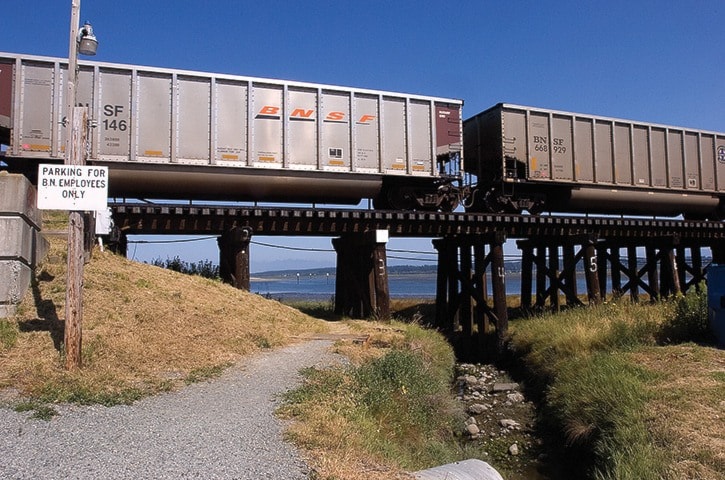Relocation of the BNSF line off the Semiahmoo waterfront is still worthy of studying, according to a Surrey MP who is a member of the House of Commons Standing Committee on Transportation, Infrastructure and Communities.
The committee’s report on rail safety released last week identified an underpass beneath the BNSF line in Crescent Beach as a cheaper alternative to address one of the major safety issues – the potential for access to the South Surrey community being blocked due to a stoppage of one of the lengthy freight trains that travel through the area – as well as removing the dangers of a crossing.
The report cited an estimate from BNSF that an underpass could be constructed for $35 million, as opposed to guesses on the cost of relocating the line which range from the hundreds of millions to billions of dollars.
But Fleetwood-Port Kells Liberal MP Ken Hardie says that while pursuing an underpass would be a logical step for the City of Surrey, that doesn’t necessarily mean the idea of relocating the tracks would be on a backburner.
“The report doesn’t speak to that either way,” Hardie told Peace Arch News on Friday.
“Probably what should be done is for the city and the railway to co-operate on assessment and analysis of what an underpass would cost and find out what federal infrastructure grants could be available for the work.”
At the same time, Hardie said, it must be acknowledged that there is a “call for relocation” in South Surrey and White Rock.
Under the Rail Crossing and Relocation Act, this must be done with no net cost or gain to the railway company, but Hardie suggested there could be benefits to the company in not having to incur the expense of ‘breaking’ trains in case of an emergency.
He noted the report recommended a more stringent approach by Transport Canada in requiring railway companies to draw up long-term plans to mitigate environmental impacts, including slope destabilization, mudslides and floodplain issues, as well as increasing inspections and assuming the costs of increased signage.
The committee has also examined the conditions for rail relocation, Hardie said, adding that “there are a number of reasons to relocate a rail line.”
Part of the committee’s work has included visiting Lac Mégantic in Quebec, site of the catastrophic derailment in 2013 that claimed the lives of 47 people.
“Clearly there is a desire to relocate rail out of that community,” he said. “A large amount of that community is suffering from post-traumatic stress disorder – they say ‘we’re afraid of the trains’. It’s not a technical issue – it’s a therapeutic one.”
As far as South Surrey and White Rock’s tracks are concerned, Hardie said, there needs to be further study of appropriate conditions for relocating the line, and what would be a reasonable sharing of costs among different levels of government.
While the present location of the line may have made sense over 100 years ago, that might not always apply, he said.
“We have to consider the rather fragile alignment along the foreshore as we continue to deal with climate change and the potential for surge tides in the future,” he said.
South Surrey-White Rock Conservative MP Dianne Watts – also a member of the committee and a rail-relocation advocate since her days as Surrey mayor – was not available for comment.
